The first law enforcement simulators were 16 mm projectors that flickered their filmed images onto sheets strung across shooting ranges. When the bad guy went for his gun, the officer had to fire and then await the judgement of his trainer as to whether it was a good shoot. Today's simulators are high-tech computer systems with digital projectors that play complex interactive scenarios. They are designed not only to teach officers when and how to shoot guns and less-lethal weapons but also how to talk to suspects to avoid escalation and confrontation.
Training Simulators
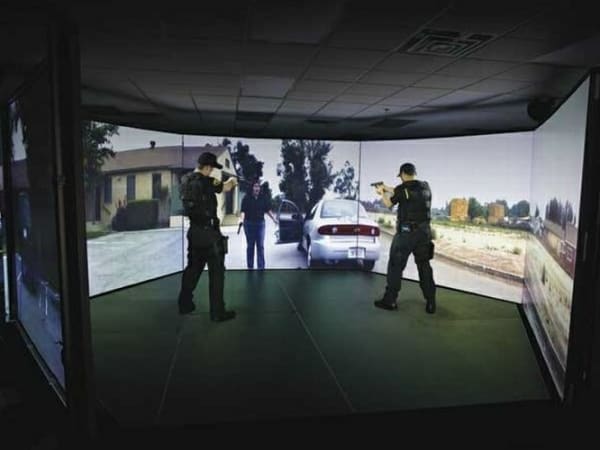
VirTra Systems produces panoramic simulators that wrap around the shooter, ranging from 180 degrees to a full 360 degrees. The effect is essentially a high-definition digital shoot-house. Students use tetherless weapons with recoil, including pistols, rifles, and subguns. Other available devices include TASERs and OC. The IVR-300 can accommodate multiple students during force option scenarios and 15 students for virtual range training.
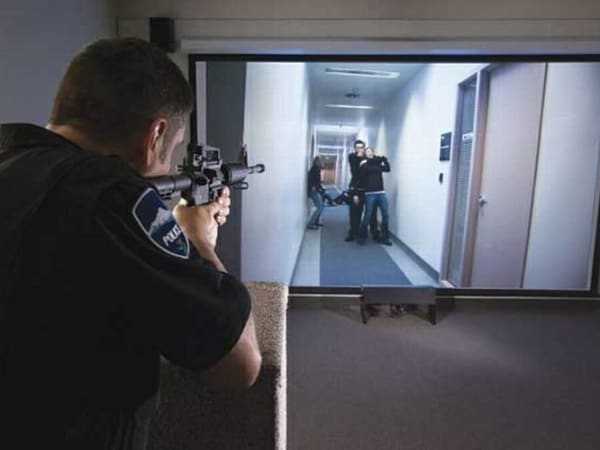
The PRISim system is designed for both marksmanship and force option and force articulation training. A wide variety of lethal and less-lethal weapons are available for use with the simulator. For extra realism and for elevating the students’ stress level, instructors can use the integrated ShootBack system. The ShootBack cannon fires .68 caliber nylon balls at speeds up to 120-feet-per second. That’s enough velocity to sting a bit and remind a student to use cover in a gunfight.
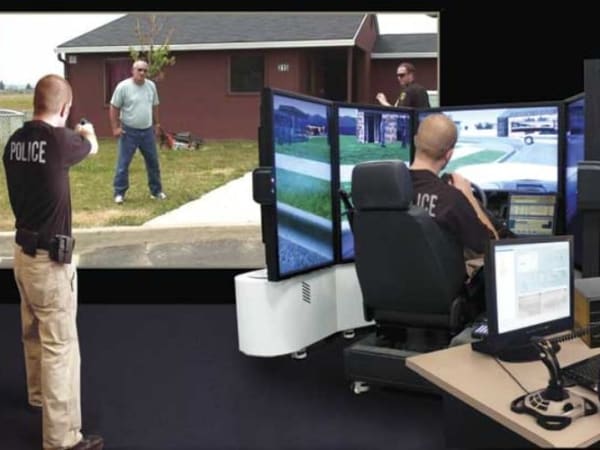
FAAC and IES combined their resources to create Driving Force, a combination FAAC driving simulator and IES MILO force option system. The idea was a no-brainer; the two companies have the same parent, Arotech. FAAC's Driving Force hybrid simulator allows instructors to immerse their students in a very realistic patrol environment. They can receive a call for service in teir patrol car, drive to a location, conduct a field interview, make a simulated arrest, use lethal or less-lethal force, and if things really go bad, the scenario can end in a vehicle pursuit.
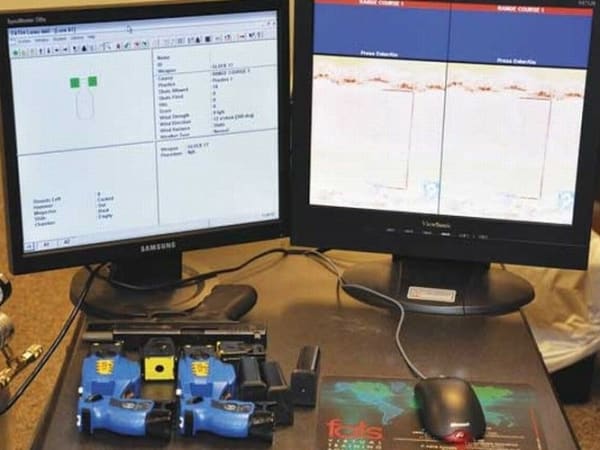
Meggitt Training Systems' LET is designed to teach both shoot/don’t shoot decision making and basic firearms skills. Trainers who use the system give it high points for its weapon sensors that tell the instructors key information about the students’ shooting techniques. Instructors can also use the BlueFire untethered weapon system to force weapons malfunctions that the students must resolve before engaging the target.
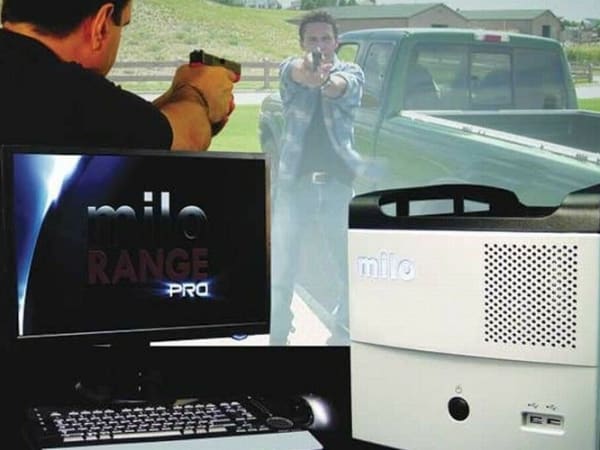
The IES MILO Range Pro comes with 250 ready-to-train scenarios, but using the MILO Course Designer instructors can produce their own. One big selling point is high-definition video and audio. The compact simulator can support up to 16 devices/weapons simultaneously, four per student. For student feedback, it captures both video and audio. Some instructors may also find the Untethered Instructor option appealing. This Windows-based PDA controller allows the instructor to move away from the keyboard and work more closely with students.

